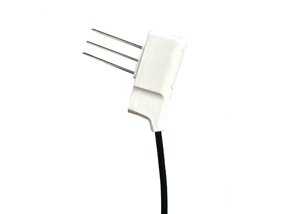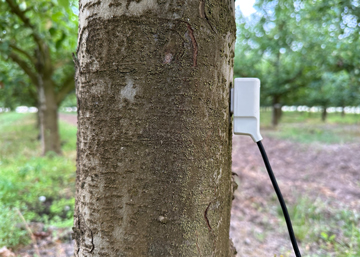Stem water content: a new sensor for plant water relations

A new stem water content sensor has been released by Implexx Sense. The new sensor will enhance the understanding of plant water relations and will also assist plant physiologists, ecohydrologists, modellers and more.
what is stem water content?
Stem water content, also known as sapwood water content or moisture, gravimetric or volumetric water content, is an important plant physiological parameter. Stem water content is a measure of hydration within the xylem or conducting tissues of plants.
Hydration, or the amount of water, within plants is critical for just about every physiological function from transpiration to stomatal conductance to photosynthesis and more. Therefore, measuring water content within plants will provide invaluable insights to a vast array of physiological processes.
why do we need a new stem water content sensor?
The measurement of stem water content has been mostly neglected by researchers and physiologists. For example, a search in Google Scholar in January 2022 of the term “stem water content” yielded 1570 results whereas the term “stem water potential” yielded 8500 results.
potential” yielded 8500 results.
The primary reason for the neglect is not a lack of interest or importance, rather the ability to measure stem water potential is far easier than stem water content. Instrumentation for stem water potential has long been established with pressure chambers where a data point can be generated within minutes. In contrast, stem water content is difficult and time consuming via sampling wood cores, quickly weighing on a scale or balance in the field, oven drying in the lab for several days, and then finally generating a data point.
Sensing technology has been attempted with stem water content with varying levels of difficulty and success. Commonly, soil water content sensors, obviously designed to measure water content in soils, have been installed in trees. The problem with soil sensors is their bulky size, potentially large area of plant tissue disturbance and wounding, inability to differentiate between sapwood and heartwood, and difficulties with calibration.
a win-win sensor solution?
Fortunately, another type of sensor technology has several features that overcome the limitations of destructive sampling and soil sensors. Sensors that can resolve the thermal properties of stems can also measure stem water content. This same sensor technology has been used since at least the 1930’s to measure sap flow, or the water use, of plants.
The Implexx Sap Flow Sensor is the win-win solution. The same sensor can simultaneously measure stem water content and sap flow in plants. The combined sensor is a powerful tool for researchers investigating plant water relations as well as for physiologists, ecohydrologists, modellers, and more.
Detailed information about the stem water content sensor, including theory, installation tips, and data interpretation, can be found on the Implexx website.
